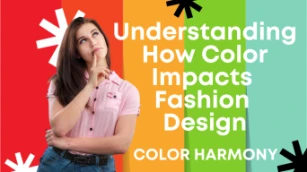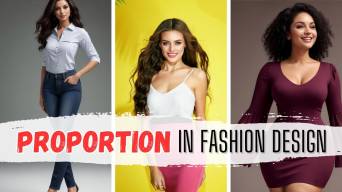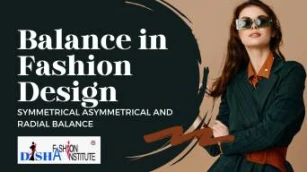The line holds considerable significance in the realm of outfit style and crucial elements of design in fashion, as its appropriate utilization can result in a visually enticing outcome. Notably, lines possess the power of visual fallacy. By skillfully adjusting lines, fashion designers can accomplish preferred visual impacts, boosting the total aesthetic and also complementary to the user's physique.
In this blog post, we will discuss various use of lines on dresses and optical illusions created by designers through the strategic use of lines. We will also provide practical insight on how you can incorporate these techniques into your design.
Table of Content
- Exploring the Magic of Lines: Initial Experiments Unveiling Illusions
- Types of Lines
- Straight Lines
- Curved Lines
- Conclusion
- All Topics on Elements of Design in Fashion
- All Topics on Principles of Design in Fashion
- Explore Free Courses
- Join Fashion Designing Course
Exploring the Magic of Lines: Initial Experiments Unveiling Illusions

The four horizontal lines depicted in the above picture are all equal in length. However, in lines 1 and 3, they appear shorter due to visual obstruction, limiting the eye's travel. Conversely, in lines 2 and 4, the eyes are encouraged to continue moving, creating the illusion of elongation.
Types of Lines
There are three primary types of lines based on their direction: straight, curved, and jagged. Additionally, dotted or broken lines can be considered as another type.
Lines can also be categorized based on their function. Structural lines encompass seam lines, hemlines, dart lines, folds, tucks, pleats, and drapes, which contribute to the construction of a garment. On the other hand, decorative lines refer to the print lines used for aesthetic purposes.
Straight Lines
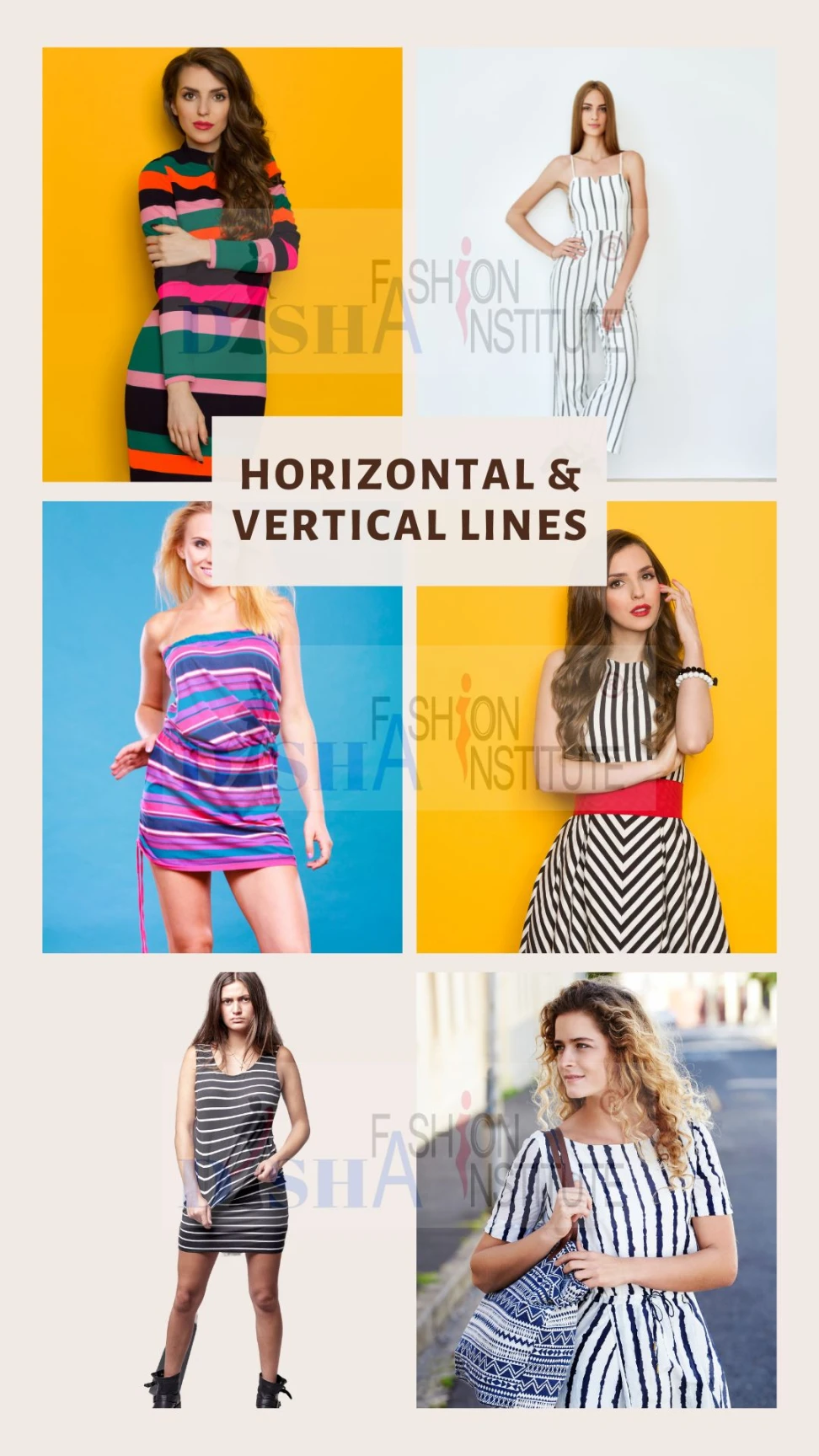
Straight lines are commonly associated with strength, formality, and a sense of seriousness, often conveying a more masculine aesthetic.
Vertical Lines
Among the straight lines, the vertical lines or the vertical stripes in a dress can create the illusion of a taller, slimmer body. Although the spacing of the lines plays a significant role in this effect. Furthermore, vertical lines are generally associated with a formal, strong, and dignified appearance.
Opting for a formal shirt with vertical stripes is an excellent choice for formal attire.
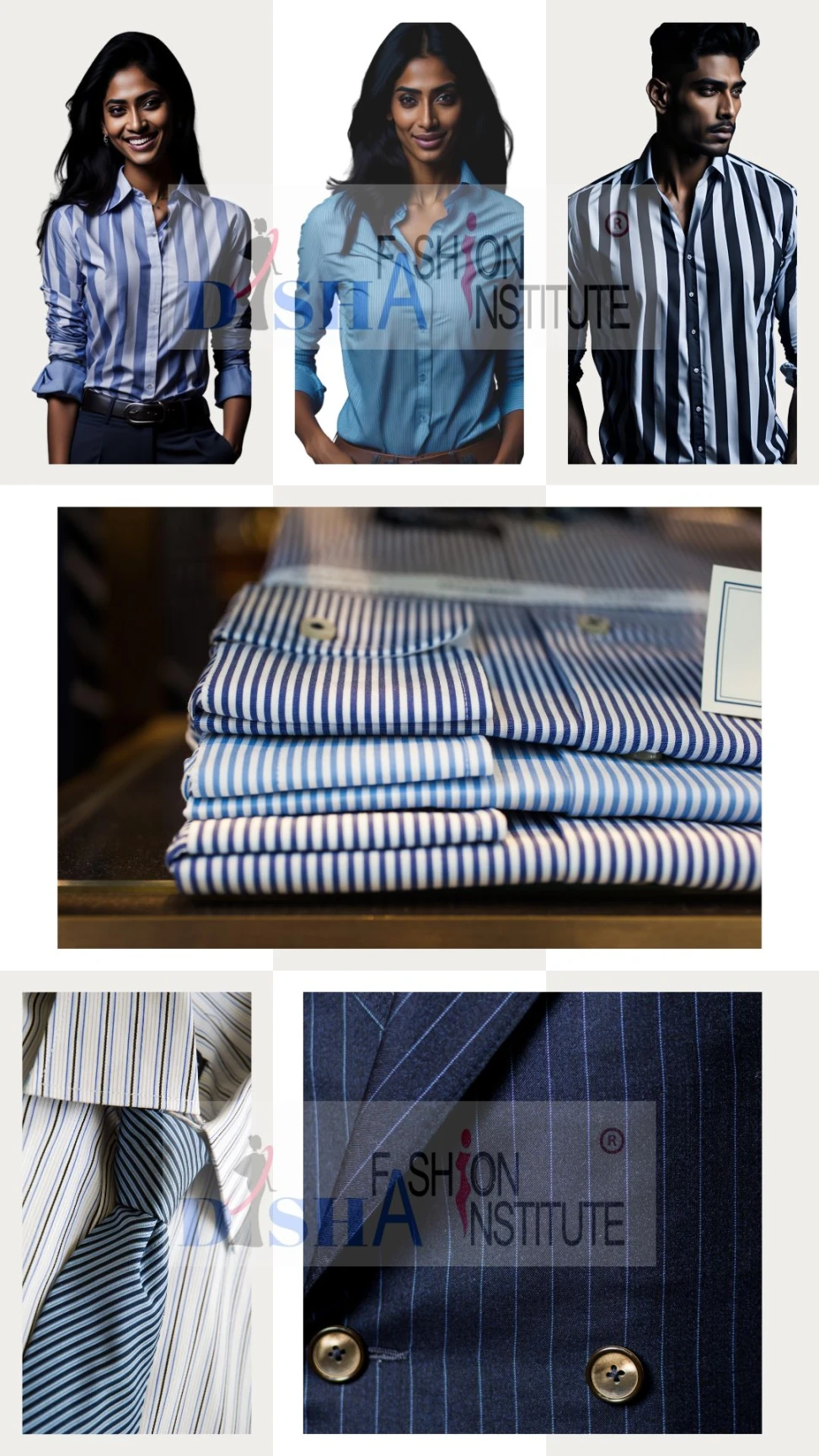
When vertical lines dominate a dress design, they draw the gaze of eyes up and down the figure. Obviously, an illusion of height is created making the figure look taller and slender and the width becomes less noticeable.
Horizontal line
Horizontal stripes in a dress create a shorter body illusion and the wearer may look thick. They can add width to shoulders, waist or hip. Horizontals are the strongest lines and one should avoid placing them in the wider area of the body which may give a larger effect.
Additionally, horizontal stripes can bring a sense of fun and flattery, while these lines have a calming, relaxed, and restful effect.
Opting for a shirt with horizontal stripes is an excellent choice for business casual attire.
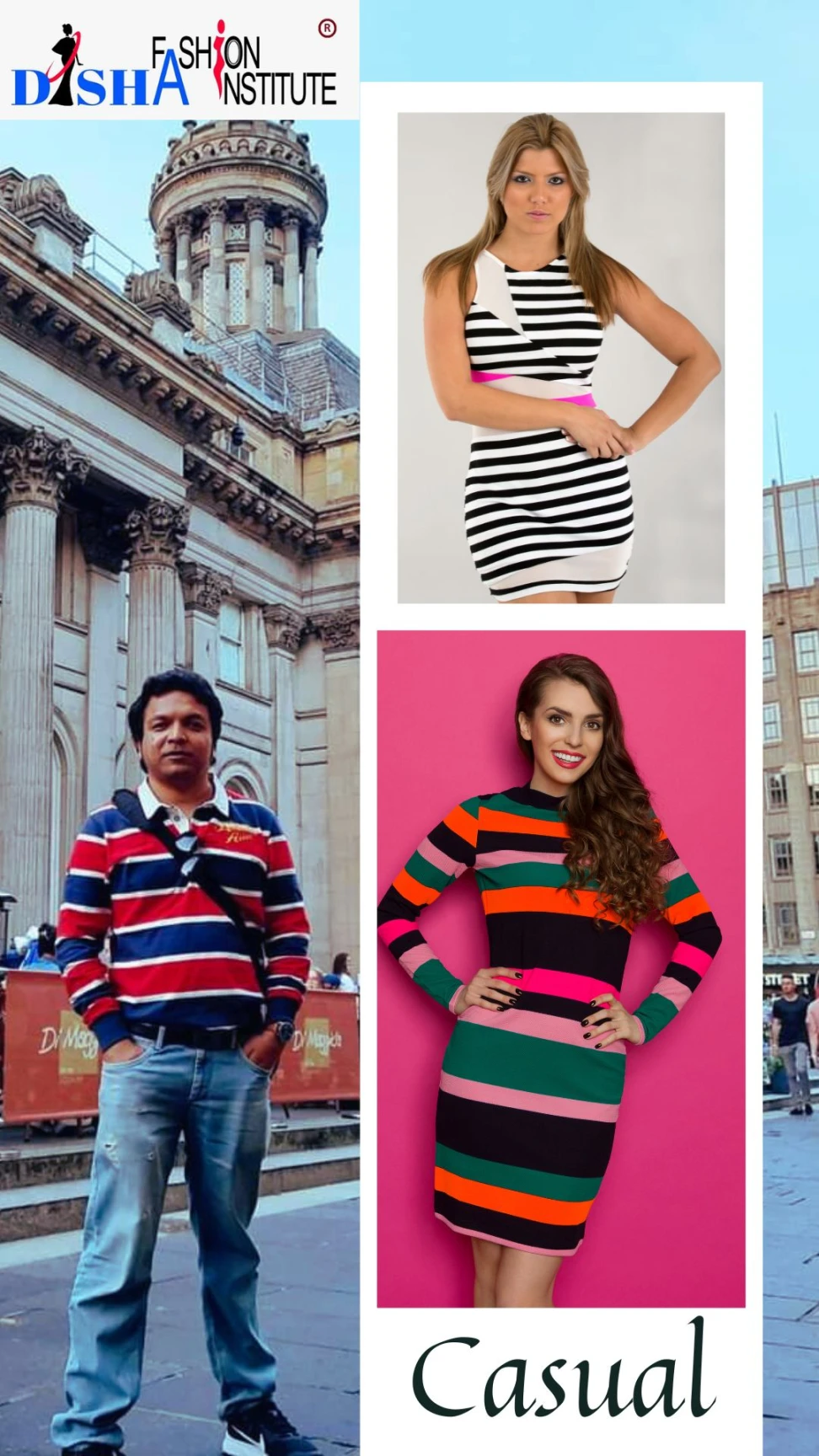
Optical Illusions By of Vertical Lines
Vertical Line vs No Vertical Line
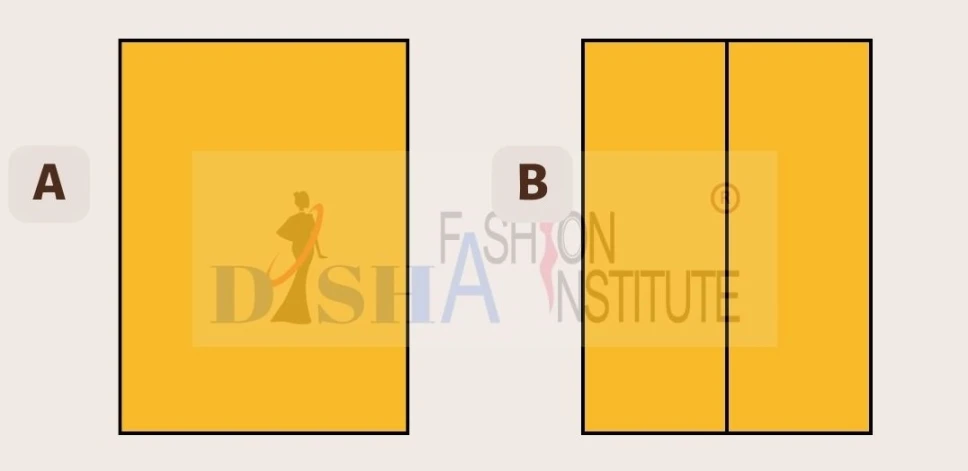
In the above picture, it is evident that the vertical line from the middle in Figure B creates an optical illusion which creates a slimming effect. So in your cloth, if you have a vertical line from the middle of your dress you will look taller.
Effect of Closely Positioned Vertical Lines
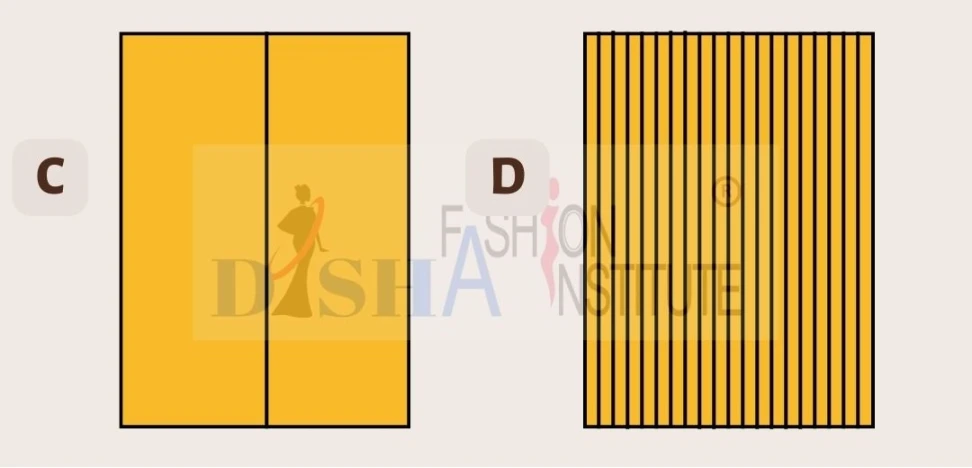
The image clearly demonstrates that closely positioned vertical lines have a greater slimming effect.
Effect of Thick Vertical Lines
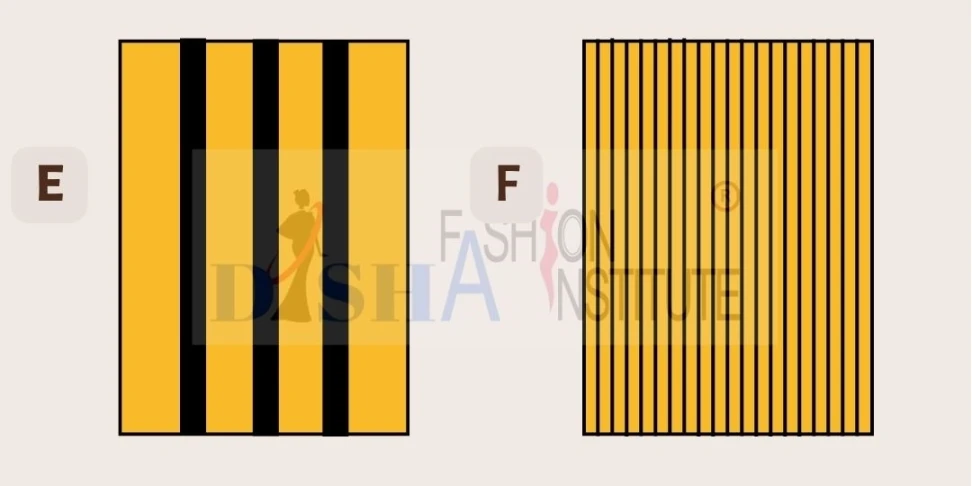
The width of lines influences the illusion created, as it contributes to adding more width to the body.
Effect of Widely Spaced Vertical Line

Widely-spaced vertical stripes can create the perception of increased width, as the eyes move horizontally across the lines.
Optical Illusions By of Horizontal Lines
Horizontal Line vs No Horizontal Line
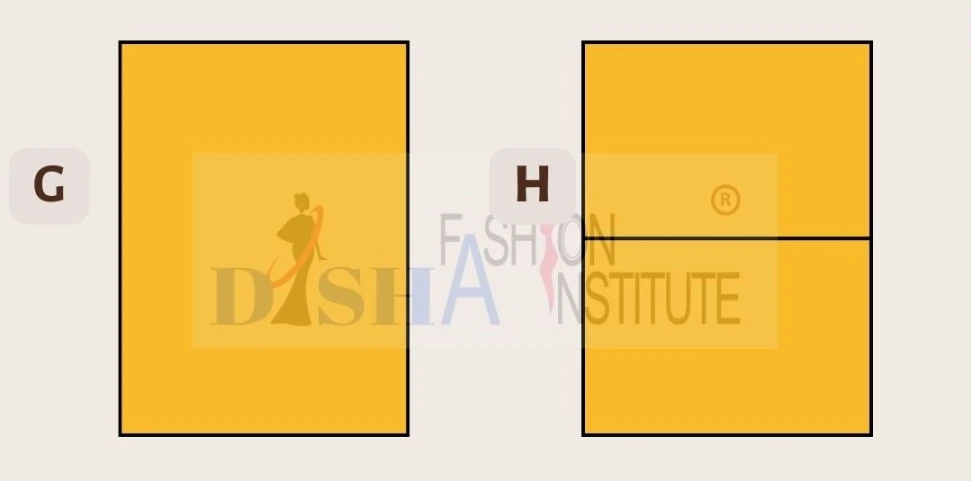
The image above illustrates that horizontal lines guide the movement of the eyes across, creating the illusion of a wider body.
Effect of Widely-Spaced Horizontal Stripes
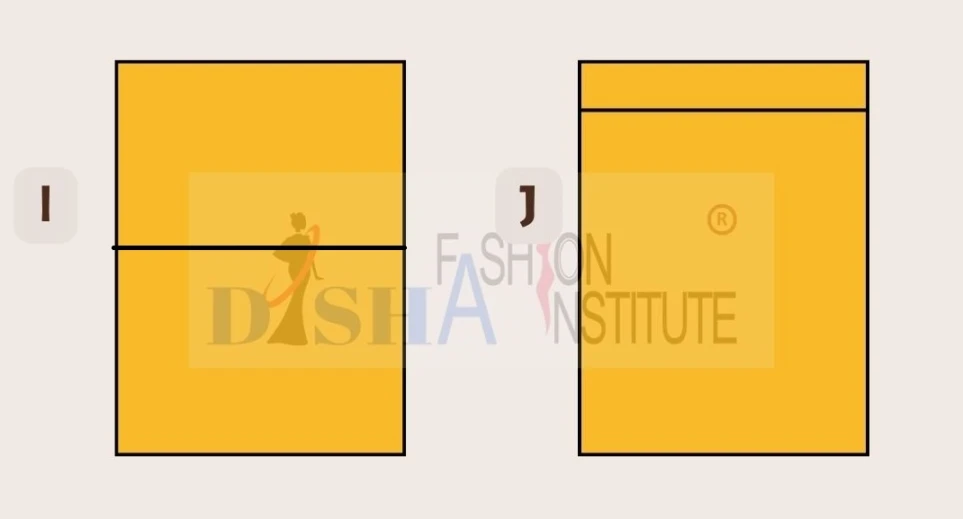
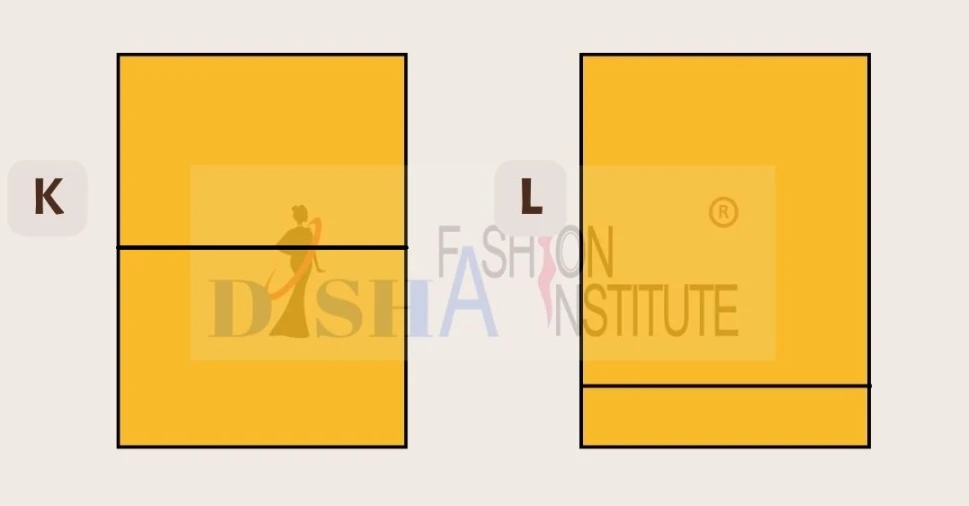
When wearing clothing with widely-spaced horizontal stripes, the eyes tend to move vertically rather than horizontally. This vertical eye movement creates a slimming effect. The longer your eyes move upward or downward before being interrupted by the horizontal lines, the slimmer and thinner you will appear visually.
Diagonal Line
Diagonal lines may help to create a sporty look and add a youthful, happier look to the body of the wearer. Again these lines are more dramatic and more fashionable in nature. In other words, diagonal lines captivate the eye with their dynamic and engaging nature, evoking a sense of action, movement, excitement, interest, and drama. This is precisely why diagonal lines are particularly beneficial in sportswear.
The dominance of diagonal lines in clothing creates active starting and dramatic effects. Modifying effect of diagonal lines depends upon the angle and length of the line, the degree of the slant of the line that determines the illusion created.
The shorter diagonal line leads the eye from side to side, giving an impression of width, while the longer line leads the eye, equally downwards and sideways for a narrow and longer look.
Let's take a closer look at an example to understand better. In the picture, we have a beautiful saree, which is a type of wrapped clothing. The draping of the saree creates various lines that affect the overall appearance. In the picture, we can see two diagonal lines marked as line 1 and line 2. Line 1, positioned at the bust line, has a more horizontal orientation. This line adds visual width to the body, enhancing the perception of a broader figure. On the other hand, line 2, located from below the waist and ends above the waist, has a more vertical direction. This line creates a visual lengthening effect, giving the illusion of a taller figure.
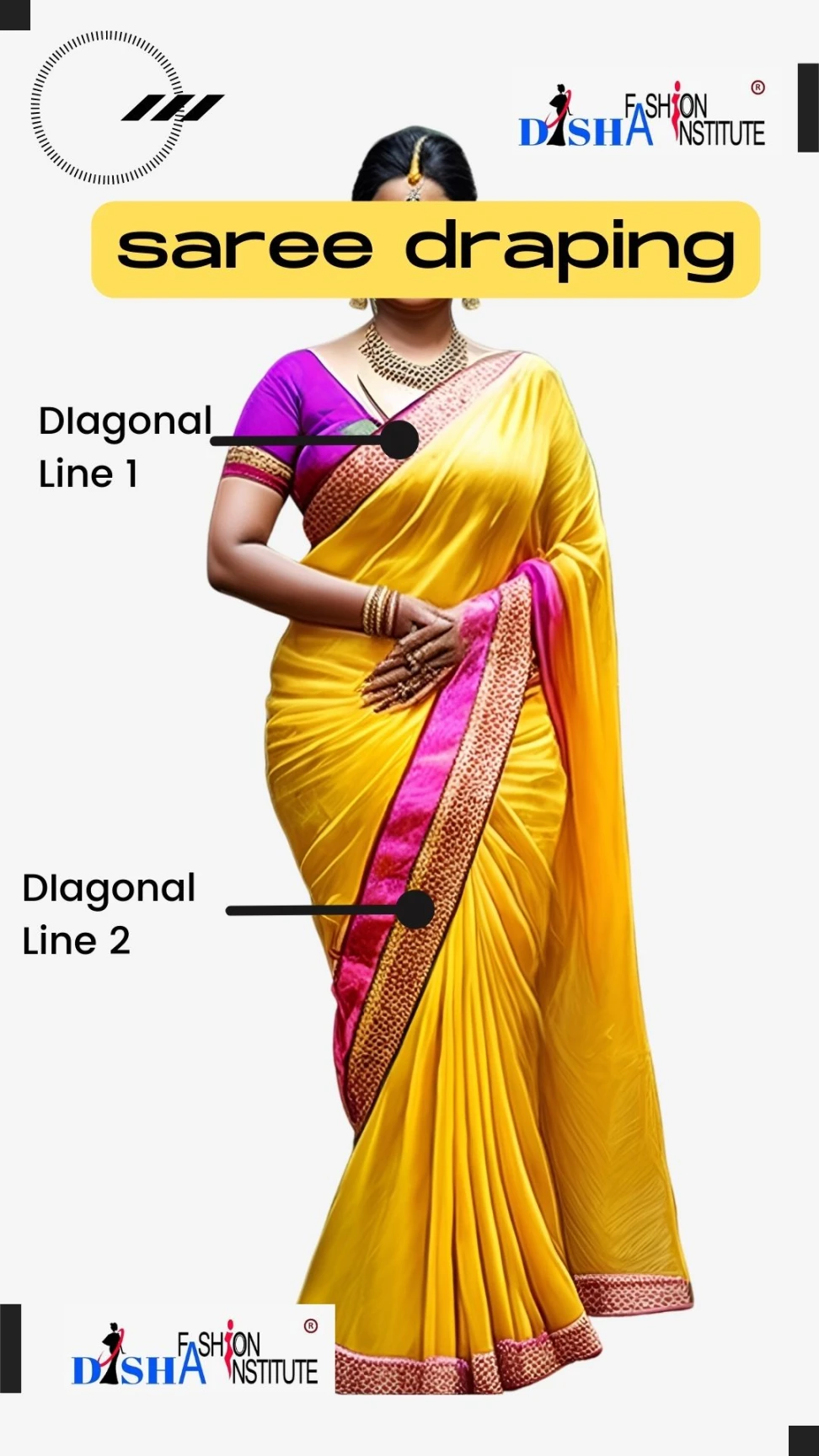
By using the following methods of draping a saree, you can create the illusion of appearing taller.
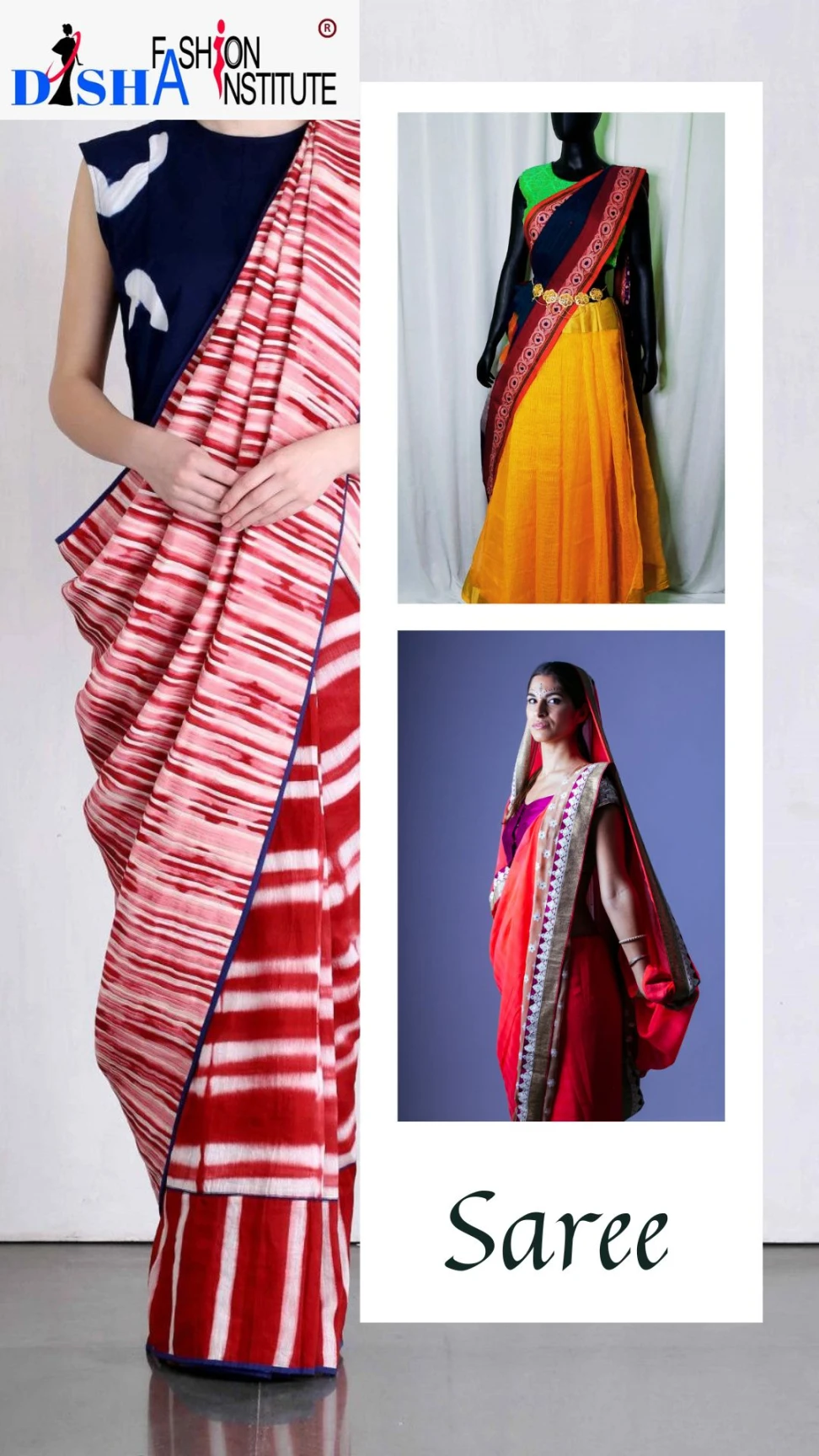
The magical "Y" shape creates a sense of height as it directs the eye upward, with no interruptions to impede its vertical movement. Slanted diagonal lines are slimming no matter where they are placed, they will slim that area.
Curved Lines
Curved lines can be circular or gently waved. They can move in a vertical, horizontal or diagonal direction. Curved lines possess a captivating quality as they mirror the organic lines observed in nature. By emulating the gentle curves found in natural forms such as flowing rivers, graceful arcs, and the contours of petals, curved lines exude a sense of softness and femininity. Their fluid and undulating nature lends an element of elegance and grace to designs, creating an aesthetic that is both visually appealing and inherently gentle. The inherent connection to the natural world evokes a soothing and harmonious ambience, captivating the viewer's senses and imbuing the design with an organic and feminine allure.
Conclusion
In conclusion, the use of lines in dress design holds remarkable significance, as it can create captivating visual illusions and enhance the overall aesthetic. By skillfully manipulating straight, vertical, horizontal, and diagonal lines, fashion designers can achieve desired effects that flatter the wearer's body shape. Vertical lines create the illusion of height and slenderness, while horizontal lines add width and a sense of fun. Diagonal lines evoke a sporty look and dynamic energy. Curved lines bring softness, femininity, and elegance to designs. Understanding and incorporating these line techniques can elevate your fashion creations to new heights. So, embrace the magic of lines and unleash their power to transform your designs and make a statement in the world of fashion.
All Topics on Elements of Design in Fashion
To delve into all the subjects about elements of design in fashion, simply navigate through the list of blog posts below. Click on the headings to access the articles you're interested in reading.

Color Psychology in Fashion Design
Impact of Color Psychology on Fashion Design: Exploring 12 Transformative Role of Color
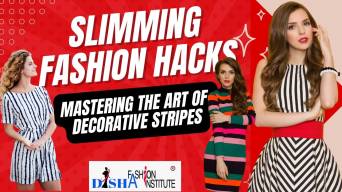
Elements of Design Line in Fashion
Elements of Design | Lines in Fashion | Creating Optical Illusions With Lines
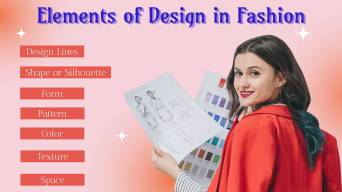
Elements of Design in Fashion
7 Elements of Design in Fashion You Must Understand as a Fashion Designer
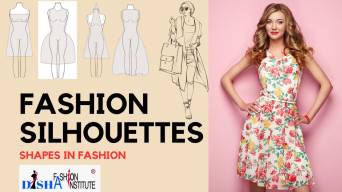
Types of Silhouettes in Fashion
Types of Silhouettes in Fashion | 12 Different Types of Fashion Silhouettes Explained
All Topics on Principles of Design in Fashion
To explore all topics on principles of design in fashion, browse the list of blog posts below and click on the relevant heading to access the articles.
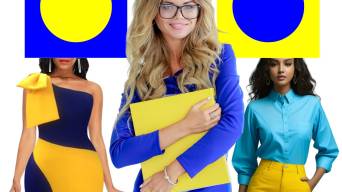
How to Contrast Colors for Clothing
How to Contrast Colors for Clothing | 8 Ways to Create Colour Contrast in Fashion
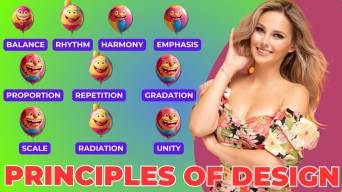
Principles of Design in Fashion
10 Principles of Design in Fashion You Need to Know to Become a Fashion Designer
Explore Free Courses
Begin your fashion journey with our free fashion design foundation course. Dive into the world of style and creation today!
Fashion Designing Foundation Course
Join Fashion Designing Course
Enrol in our certificate courses for fashion designing and textile designing


